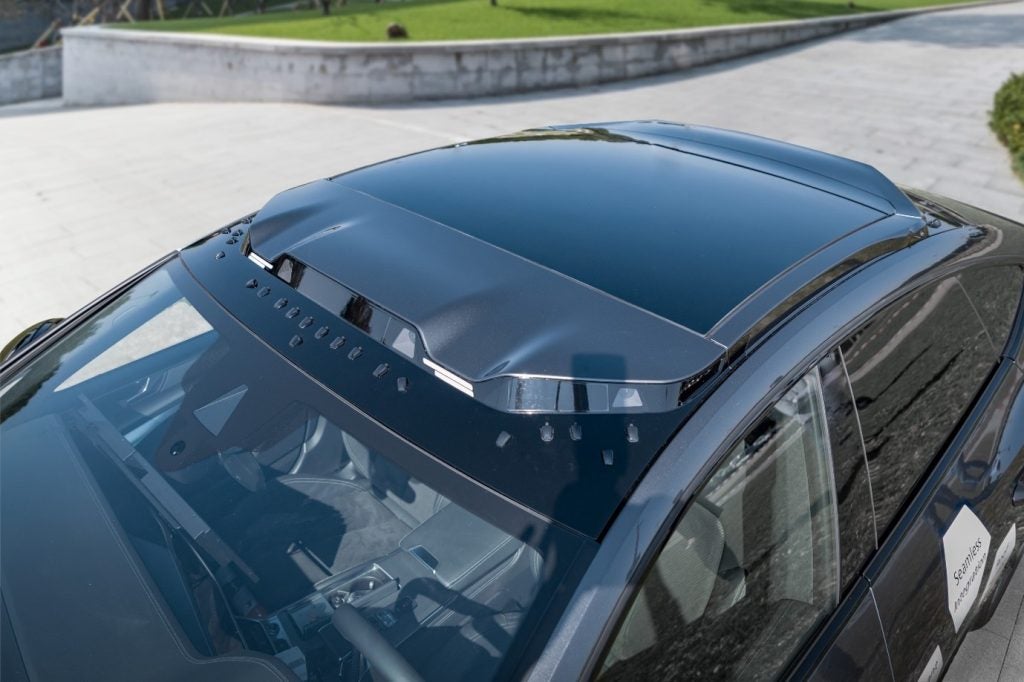
Could you tell us a little about Valens Semiconductor, when it entered the automotive industry, the shape the company is in today, your customers, and your aims for the next 12 months?
Founded in 2006, Valens is a leading provider of semiconductor products for the evolving and growing automotive and audio-video markets. Our standard-setting technology is deployed by leading companies in applications where performance and cost are critical. Earlier this year, in September 2021, Valens was listed on the New York Stock Exchange, marking an important milestone in our corporate journey and giving us the market endorsement we needed to accelerate our growth.
We push the boundaries of connectivity by enabling long-reach, high-speed video and data transmission. Our chipsets transmit video and data at industry-leading multi-gigabit bandwidth over long-reach, space-efficient wiring infrastructure, guaranteeing error-free links with zero latency – all at the lowest total system cost.
Our products are already on the road in vehicles around the world, powering the state-of-the-art MBUX infotainment systems of Mercedes-Benz models. Our technology was selected as the baseline for the MIPI A-PHY standard for in-vehicle high speed, long-reach sensor connectivity. The A-PHY ecosystem is growing at a fast pace, with companies like Mobileye, Sony, Sunny Optical, and LG Innotek all publicly announcing support for A-PHY, and many more integrating it into their product roadmaps.
As the market leader, Valens is the first company to introduce MIPI A-PHY compliant chipsets, and we believe this will mark an important milestone in the transformation of in-vehicle connectivity for cars all around the world.
Why did you choose PTK and what opportunities has the SPAC merger created?
How well do you really know your competitors?
Access the most comprehensive Company Profiles on the market, powered by GlobalData. Save hours of research. Gain competitive edge.

Thank you!
Your download email will arrive shortly
Not ready to buy yet? Download a free sample
We are confident about the unique quality of our Company Profiles. However, we want you to make the most beneficial decision for your business, so we offer a free sample that you can download by submitting the below form
By GlobalDataPTK Acquisition Corp was one of numerous SPAC companies that were targeting a stable business, with innovative technology and a compelling and successful growth story. PTK has extensive operational and investment experience in the hardware and semiconductor industries, and the management team has a track record of leveraging global market relationships to tap into synergies across the electronics and automotive value chain. So for us, it was a natural fit.
We understand that Valens is forecasting strong growth in revenues between now and 2026. What’s behind this?
Valens operates in a fast and growing market and the Addressable Markets we operate in are expected to reach $9 billion by 2026.
We are focused extensively on MIPI A-PHY. Engineering samples of the first A-PHY compliant chipsets –the VA70XX family – are expected to be released soon to select prospective customers and partners, and we believe that they will make a big splash in the industry. Many companies have expressed interest in A-PHY, and in our chips specifically, and we are confident that they will lead to additional customer wins. We’ve set ourselves ambitious but achievable targets, and I believe we are well-positioned to reach them.
ADAS is a fast-evolving landscape. While we are seeing an acceleration of level 1 and 2 driving automation, there are delays in higher levels due to the lack of an established regulatory framework and the technical challenge of providing safety in all driving situations. In terms of Level 2+ for cars shortly, how do you see the market evolving?
Without touching the regulatory issues, which are indeed significant but outside of our realm of authority, the automotive industry will need to make real technological improvements if it wants to “level up”, both in quality and quantity of sensors to enhance passenger safety. These are some of the critical hurdles that the industry must clear already for the level 2 and level 3 cars, and definitely for the full deployment of autonomous vehicles, as well as for the software-defined vehicles of the future:
- Zero latency – automation requires flawless communication between different systems within the vehicle, including both sensor-to-ECU as well as ECU-to-ECU. As more features and applications are added, cars must compute and transfer more data, which causes significant delays. In scenarios where safety-critical decisions need to be made within fractions of a second, this can result in severe – even fatal – consequences.
- High bandwidth connectivity – Connected cars must constantly communicate in real-time, continuously processing and streaming data from the vehicle’s environment and its internal systems. It is just a matter of time before cars will generate and consume terabytes of data per day – an amount of data that will undoubtedly require high bandwidth to support it. The sheer range of computing platforms and data to be processed makes it difficult to integrate autonomous driving systems that can communicate efficiently within the vehicle, which is why high-bandwidth transmission will be indispensable in ushering in self-driving cars.
- Error-free transmission – In order to move onto the higher levels of autonomous driving, cars must be able to transmit data from higher resolution cameras, next-generation radars, and so on. This requires much higher bandwidth – 8-16Gbps and beyond – which can also open up the wiring infrastructure to errors. Therefore, ensuring the car wiring infrastructure can transmit high bandwidth with zero errors is a vital step towards reaching the next levels of autonomous driving.
Upgrading in-car connectivity infrastructure will pave the road for the next stages of evolution in autonomous driving and software-defined vehicles.
The connectivity standard gaining industry momentum is A-PHY. Why is A-PHY the gold standard for in-vehicle connectivity?
The automotive industry needs a standardized solution that can guarantee zero-latency, error-free, high-speed communications in the vehicle. Though there has long been competition towards implementing a standard automotive connectivity solution, A-PHY is leading the way both in maturity, market ecosystem and technological superiority.
A-PHY compliant chipsets can support 2-16 Gbps over 10-15 meters of cabling, with a road map to 24-48+ Gbps — more than enough to deal with the very challenging bandwidth requirements of current and future sensors technology. These high-speed links are practically immune to electromagnetic noise, ensuring error-free links between components.
Additionally, many OEMs are in the process of evaluating A-PHY, sensor companies such as Sony have already committed to integrating A-PHY into their product lines, and suppliers such as Mobileye have publicly stated that they will support A-PHY in their next-generation products.
Valens’ technology was selected as the baseline for the MIPI A-PHY, the new global automotive video connectivity standard released in 2020. Earlier this year, the renowned IEEE standardization body ultimately adopted A-PHY as one of its standards. The selection of Valens’ technology puts us far ahead of the curve by enabling us to offer the first MIPI A-PHY compliant chipsets on the market. As I mentioned, we will have engineering samples available for customers by the end of 2021, so this standard is well on its way to becoming a reality in the industry. Within just a few years, I’m confident that you’ll see this technology in basically every car leaving the assembly line.
To what extent does A-PHY technology reduce wire complexity, vehicle weight and total system costs?
Not only is A-PHY superior to any connectivity technology being used today in cars, but it also lowers total system costs. Recently, independent benchmarking firm A2MAC1 released a report showing that using MIPI A-PHY-based chipsets for higher-resolution camera sensors and SerDes solutions would result in a total system cost reduction of up to 15%, relative to existing proprietary solutions. This includes a 63% reduction in wire harness and connector costs, which together form a significant portion of the total system cost. The report stated that there are further cost reduction opportunities for OEMs resulting from the native integration of A-PHY into image sensors.
What did you learn during the pandemic that you did not expect to learn? And did it open unexpected opportunities for Valens?
I’ve focused most of my answers on the automotive market, but I must say, we have a whole other business unit – Audio-Video – that is very successful. We have created the HDBaseT industry standard for long-reach connectivity, and our chipsets are embedded in the products of all major Audio-Video players.
Of course, that industry underwent a massive and accelerated transformation due to COVID-19, with everything moving online. Video conferencing gained supremacy, and it has become the communication method of choice in schools and offices around the world.
We’re happy to note that our video-conferencing solutions became a major focus for our Audio-Video business. We believe that hybrid education and the hybrid workplace will be here to stay. We are also seeing business opportunities rising in additional verticals such as Industrial, Medical Imaging and Transportation. So we’re bullish about both of our business segments – automotive and audio-video.



